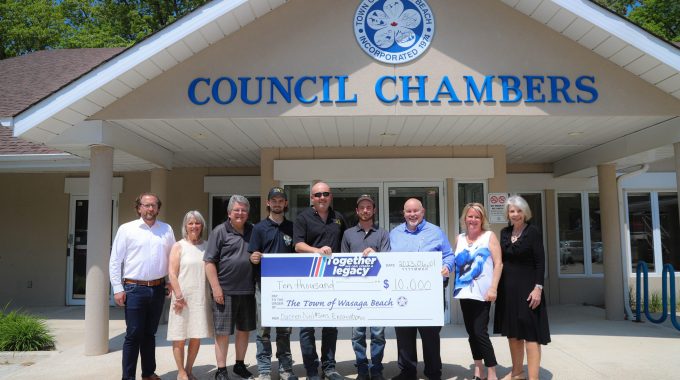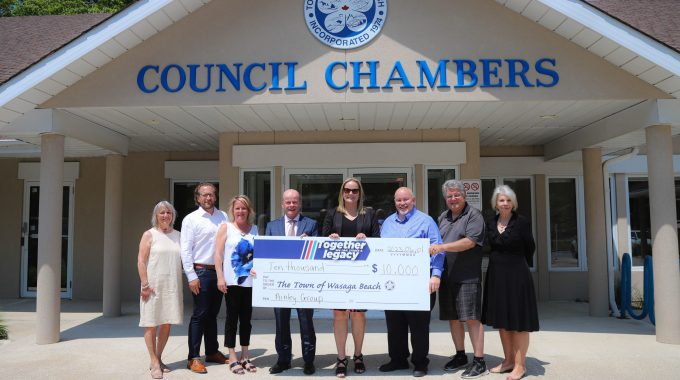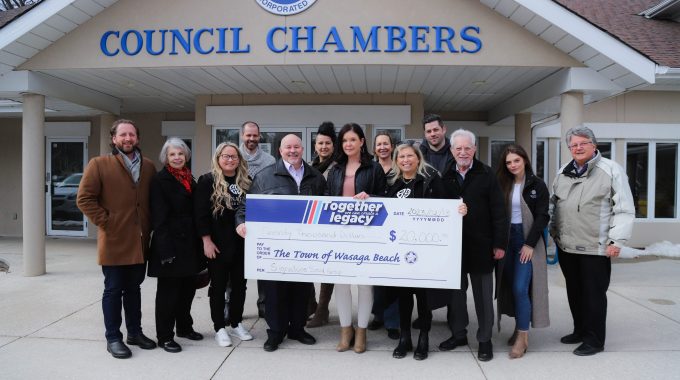The Town of Wasaga Beach is pleased to share that Darren Neil and Sons, a…

Healthy communities, libraries and youth mental health
There is a global and national concern for the mental health of our youth.
Youth defined by many community agencies as young people between the ages of 12 – 25 years of age and more recently this definition had been extended to include young people to the age of 29. The World Health Organization (WHO) has identified mental health as a “global health disease in youth approaching 30% of the total global disease burden,” (Kutcher). Youth Mental Health Canada notes that an “estimated 1.2 million children and youth in Canada are affected by mental illness.” The onset of mental illness largely occurs during this time period. Sharma and Singh in Child and Adolescent Mental Health note that mental health issues left untreated can have social and economic consequences in later life to both our healthcare system and society in general. Many education studies on youth and mental health note the urgency and importance of implementing mental health programs in schools, and school boards have made student access to mental health programming a priority. Further to this, as noted in The Mental Health Strategy for Canada: A Youth Perspective, a community approach is necessary for success in addressing mental health in youth. Mental health in general is not always talked about or addressed because of the stigma attached to mental health challenges. As educators, we know that caring for the whole child is an integral aspect of school engagement and success. But school programming alone is not enough and there are often long wait times for accessing community mental health programs and services. Families need community support in helping address the dire issue of youth mental health.
How do we connect youth mental health to libraries?
The Mental Health Strategy for Canada: A Youth Perspective outlines that a mental health strategic plan must necessarily be adopted by communities in order to provide further resources for youth. More specifically, community planning for youth including education and recreation are important elements of a healthy community strategy in promoting good mental health for youth. Libraries are part of this community strategy. For example, a study by Yeon-Oak Lee of Vancouver Public Library Services notes that library staff provided young patrons with information on dealing with problems by recommending appropriate books, professional services, or institutions that could help with mental health issues.
Attending library programming can be a proactive choice for young people. Before becoming a teacher, I was a library worker for 10 years for Toronto Public Libraries. I worked in the Jane-Finch neighbourhood and in other multicultural communities in Toronto. Many libraries boasted a multilingual book collection and programming. On Saturday mornings, we would pack up books and our portable scanner and take it to the Jane-Finch mall. Our aim was to attract youth by giving them a safe place to be after school. Although, that seems like a long time ago, in many ways things have not changed in that families and communities strive to provide proactive after-school activities for youth through youth centres, sports clubs, YMCA programs and libraries. Such programming and activities have allowed youth to experience a sense of belonging, alleviate social isolation, which all have demonstrated success in promoting positive mental health with youth.
As a parent and grandparent, I have always looked to move to progressive communities which offer resources for families – progressive communities promote the health and wellbeing of families, seniors and youth. Community resources can include a skating park, an arena, a baseball or soccer field, a recreation, senior or youth centre, a bike trail, green space, dog parks, or a library, all of which would ideally be designed for a growing community like Wasaga Beach. I am more than excited for the building of this new facility. But more than excited I am hopeful because this is a resource we are creating for the generations of youth and families to come.
Angela Bosco has been an educator with York Region and Simcoe County District School Boards for over 20 years.
References:
Canadian Mental Health Association (CMHA). Mental Health Resources in Schools. Retrieved from: https://ontario.cmha.ca/documents/mental-health-resources-in-schools/ March 2021
Kutcher S. “Facing the Challenge of Care for Child and Youth Mental Health in Canada: a Critical Commentary, Five Suggestions for Change and a Call to Action” Healthcare Quarterly (Toronto, Ont.). 2011
Lee, Yeon-Ok “A Study on the Trends and Characteristics of Mental Health Services in the Public Libraries of North America.” Retrieved from: Journal of Korean Library and Information Science Society Volume 41 Issue 1. March 2021
Mental Health Commission of Canada. The Mental Health Strategy for Canada: A Youth Perspective. Retrieved from: https://www.mentalhealthcommission.ca March 2021
Sharma, Prachi and Singh, Shreya. Child and Adolescent Mental Health. Routledge Press, 2015.
Youth Mental Health Canada. Youth Mental Health Reality: The Difference We Can Make. Retrieved from: https://ymhc.ngo/resources/ymh-stats March 2021



